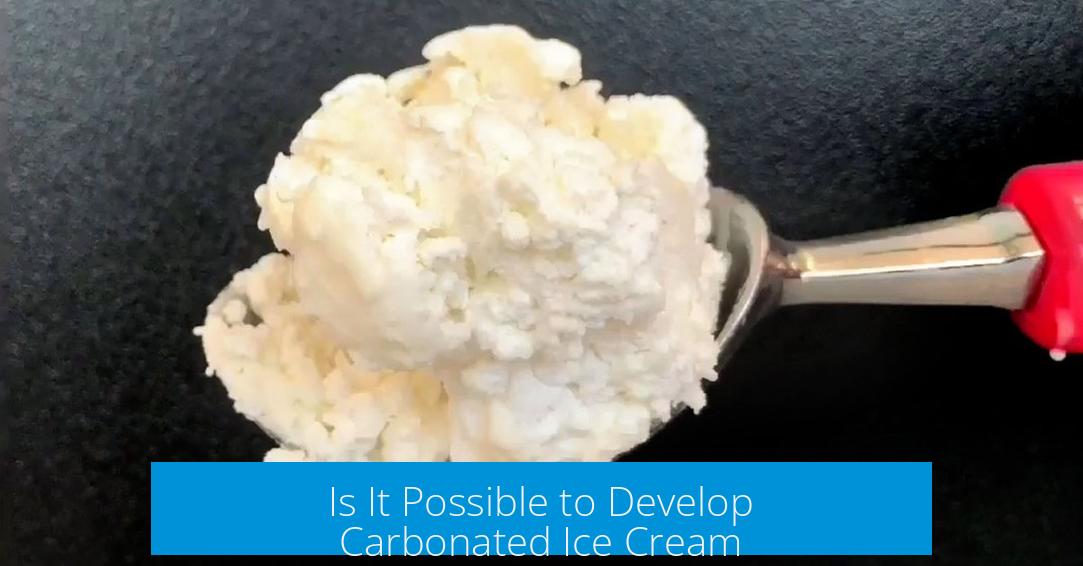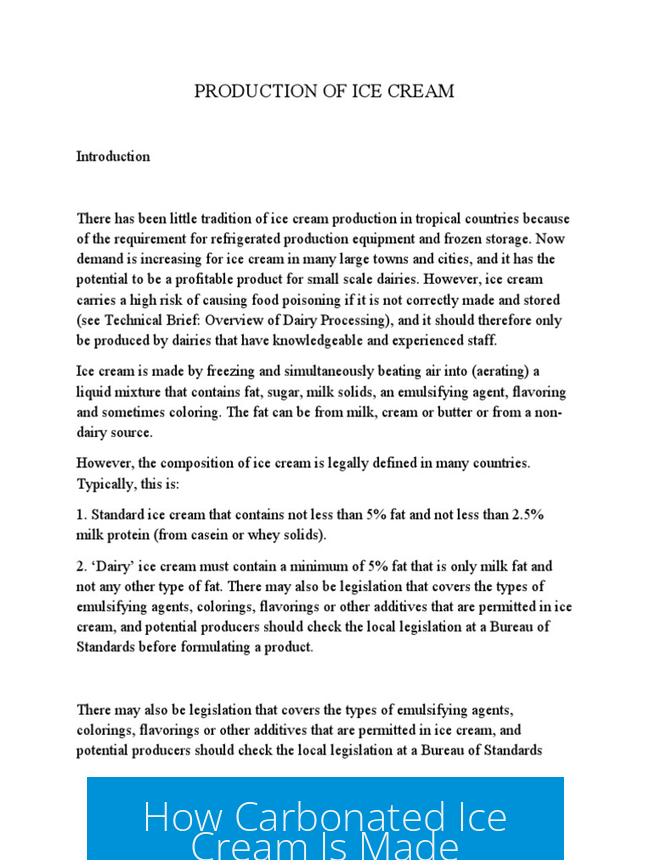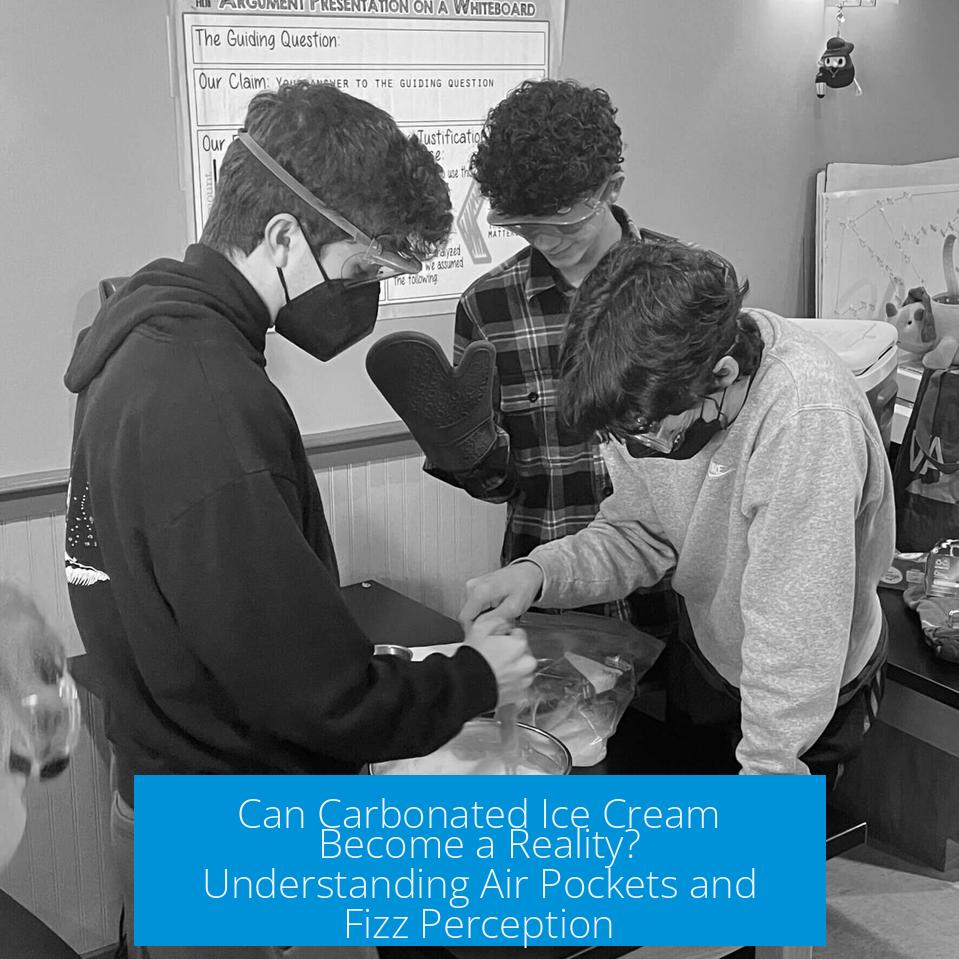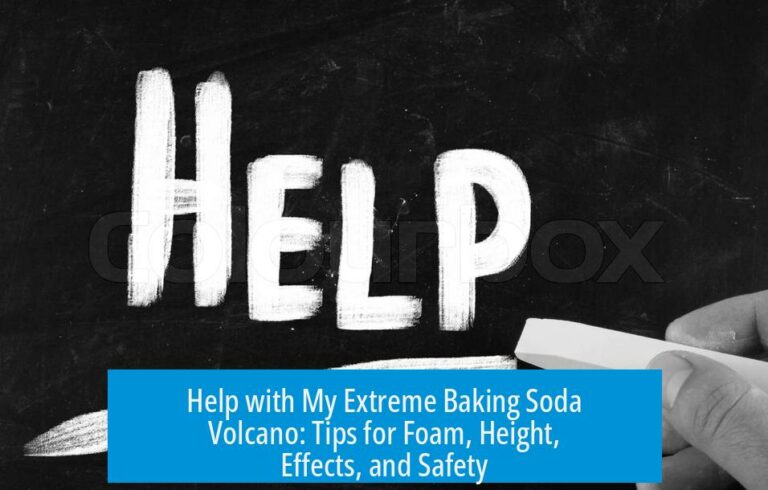Is It Possible to Develop Carbonated Ice Cream?

Yes, it is possible to develop carbonated ice cream, but significant challenges affect its production and sensory experience. Historically, companies like Hydrox produced carbonated ice cream in the early 20th century. Today, hobbyists and chefs use CO2 or dry ice to make variants of carbonated ice cream at home or in shows, demonstrating the concept is feasible.
How Carbonated Ice Cream Is Made

- Ice cream typically contains 30-50% gas, usually air, whipped in for texture.
- This gas can be replaced with CO2 or nitrogen to create carbonation effects.
- Dry ice (solid CO2) is blended in to chill and aerate the mix simultaneously.
- Soft ice cream’s lightness comes from air, but to maintain fizz, the product must stay under pressure.
Challenges in Carbonated Ice Cream Production
Introducing CO2 leads to lowered pH, which destabilizes milk proteins. This requires adding stabilizers such as egg, soy lecithins, or xanthan gum to preserve texture. The dairy base often turns sour and can develop an unpleasant mouthfeel. Moreover, CO2 bubbles cannot move easily within the frozen matrix and risk sudden expansion or explosion due to temperature changes.
Maintaining carbonation requires pressure; without it, the CO2 escapes, leaving only air pockets indistinguishable from regular ice cream bubbles. Thus, while conceptually interesting, carbonated ice cream faces textural and flavor hurdles that limit commercial success.
Why Don’t We Perceive Ice Cream Air Pockets Like Soda Fizz?
Physical and Sensory Differences
Air bubbles in ice cream are static and dispersed within a semi-solid matrix. These pockets do not move or burst in the mouth. In contrast, carbonation in soda forms dynamic CO2 bubbles that pop, releasing gas and stimulating sensory receptors.
Humans detect carbonation chemically, not just physically. CO2 dissolves, forming carbonic acid that activates “sour” taste receptors and a specific enzyme (carbonic anhydrase 4) on taste buds. This chemical stimulation produces the familiar “fizz” sensation.
Scientific Insights Into Carbonation Perception
- Even without bubbles, carbonation tastes notable due to its chemical effect.
- Blocking the enzyme that detects CO2 can make soda taste flat or bland.
- Ice cream’s cold and viscous matrix limits CO2 mobility, so fizz is not perceived as carbonation.
Summary of Key Points
- Carbonated ice cream is possible but faces challenges with protein stability, flavor, and texture.
- CO2 bubbles are unstable in frozen, viscous media and require pressure to maintain fizz.
- Air bubbles in ice cream do not mimic the sensory experience of carbonation.
- Sensation of fizz involves chemical activation of taste receptors by dissolved CO2.
- Ice cream’s structure prevents movement and bursting of bubbles, unlike soda.
Can ice cream truly be carbonated like soda?
Yes, but with challenges. Carbonated ice cream exists but maintaining fizz is tough. CO2 bubbles don’t move well in ice cream and often burst. Some recipes use CO2 to fluff ice cream, but it’s not the same as soda’s fizz.
Why don’t we feel bubbles in ice cream like we do in soda?
Ice cream’s cold and solid texture traps bubbles, so they don’t move like in liquid soda. Also, the gas in ice cream is mostly air, not carbon dioxide, so there’s no fizz sensation on the tongue.
Why does carbonation affect ice cream’s taste and texture negatively?
Carbonation lowers pH, which destabilizes milk proteins in ice cream. Additives are needed to fix this. The sour taste and odd mouthfeel often result, making carbonated ice cream less pleasant than regular.
How does our mouth detect carbonation in soda?
We sense carbonation through receptors sensitive to carbon dioxide. An enzyme called carbonic anhydrase 4 helps detect CO2 as sour. When blocked, soda tastes flat, showing we respond to CO2 chemically, not just physically.
Could soft ice cream be made fizzy under pressure?
Technically yes, but maintaining fizz is tricky. To keep bubbles active, the ice cream would need to be stored under pressure. Otherwise, CO2 bubbles escape or burst, so the fizz sensation doesn’t last in ice cream as it does in soda.





Leave a Comment